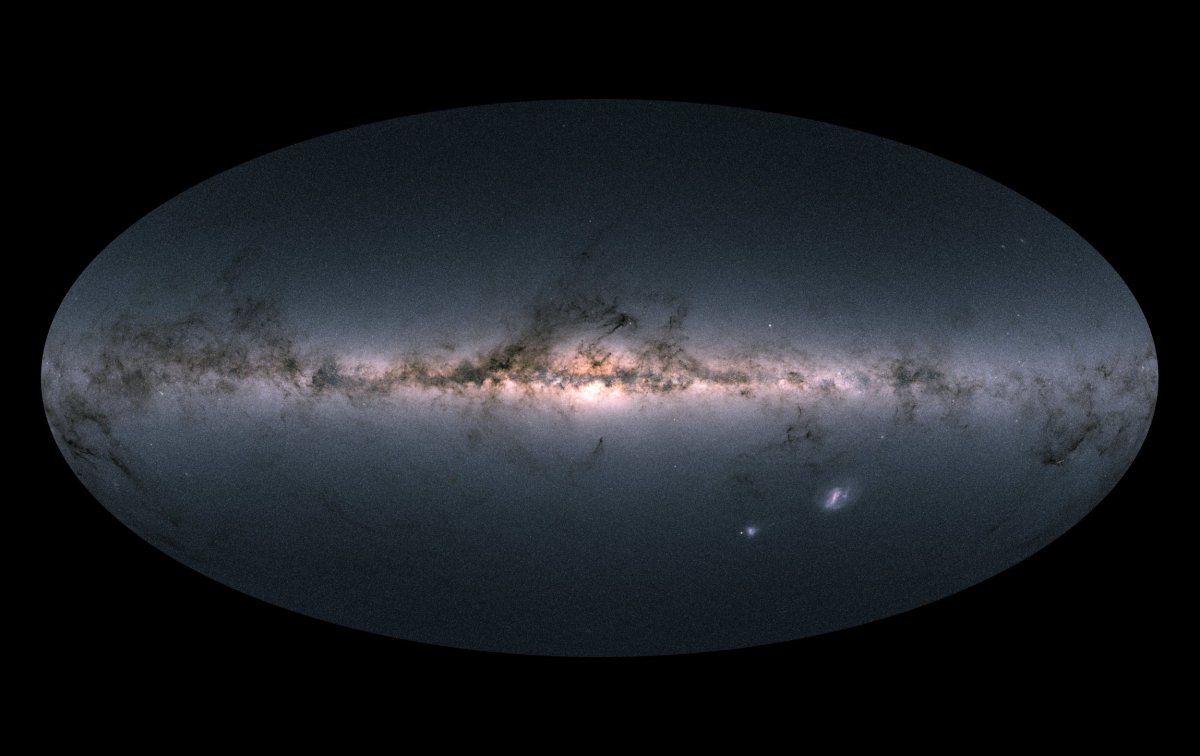Our galaxy glitters with the light of some 200 billion stars. A barred spiral tapestry of planets, asteroids, dust and gas, the Milky Way has glowed for billions of years.
Now, the European Space Agency's Gaia satellite has produced the most accurate 3-D map of the galaxy ever. Shared through two data releases—one in September 2016, and one today—the map charts the color, motion and distance of nearly 1.3 billion stars, and the position and brightness of nearly 1.7 billion.

Much of the Milky Way is obscured by swathes of dust and gas. Gaia's data should give scientists a peek behind these clouds and trace our galaxy's spiral structures. Gaia tracks the way stars move, as well as their colour and brightness. This will allow astronomers to identify the age and composition of stars, and help them figure out how they have moved and changed over the lifetime of the galaxy.
Gaia's data represents "the most precise and complete stellar catalog ever produced," Gaia Science Operations Manager Uwe Lammers told Gizmodo.
Launched on December 19, 2013 from Kourou, French Guiana, Gaia is set to probe the skies until at least 2020—an extension already approved by the ESA. Its first batch of data gave astronomers the position and of 1.1 billion stars, but the light curves and characteristics of only about 3,000 variable stars. Today's batch—comprising 22 months of observations—brings that number to half a million variable stars. It also reveals the surface temperature of 161 million stars and the radius and luminosity of 76 million.
"Gaia is an unprecedented map of the Milky Way galaxy, fundamental astrophysics at its finest, laying the groundwork for decades of research on everything from the Solar System to the origin and evolution of the Universe," Emma Rice, an astronomer from CUNY College of Staten Island and the American Museum of Natural History, told Gizmodo. "It is at once foundational and transformative, which is rare in modern astronomy."

Gaia will also shine a light closer to home on the thousands of asteroids zipping through the solar system. It will offer orbit data that's 100 times more accurate than before, University of Cambridge astronomer Gerry Gilmore told Science.
Beyond the numbers, astronomers can use Gaia's data to visualise our galaxy. Mapping the density of stars can produce incredible images that can teach scientists about the Milky Way and galaxies beyond our own. The ESA has already released the first new Gaia images (including the ones on this page) online.
Uncommon Knowledge
Newsweek is committed to challenging conventional wisdom and finding connections in the search for common ground.
Newsweek is committed to challenging conventional wisdom and finding connections in the search for common ground.
About the writer
Katherine Hignett is a reporter based in London. She currently covers current affairs, health and science. Prior to joining Newsweek ... Read more
To read how Newsweek uses AI as a newsroom tool, Click here.








